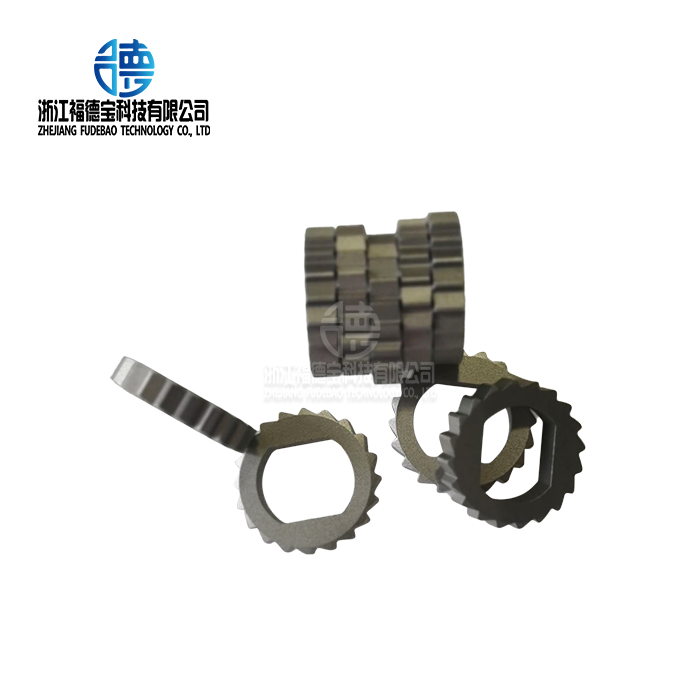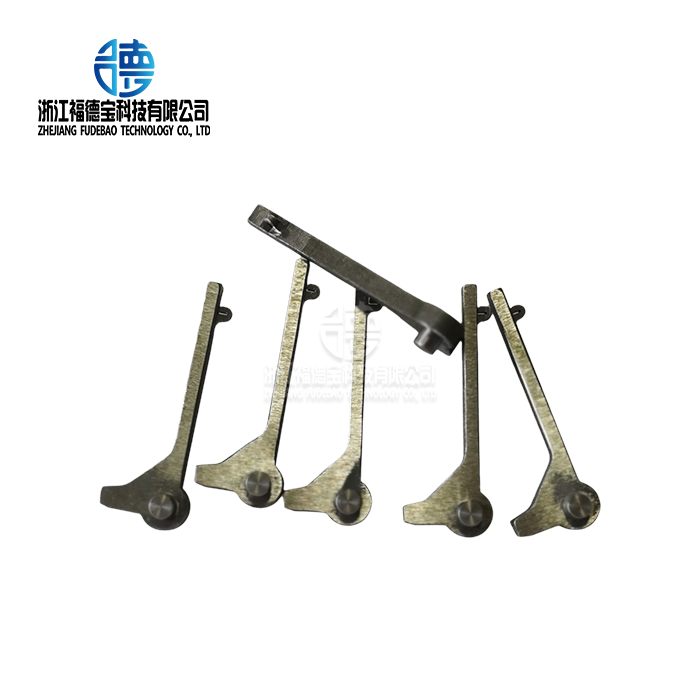Common Surface Finishing Techniques for CNC Machined Parts
Mechanical Finishing Methods
Mechanical finishing methods involve physically altering the surface of CNC machined parts using abrasives or tools. These techniques are often the first step in achieving a desired surface finish.
Polishing is a widely used mechanical finishing method that creates a smooth, reflective surface. It involves using progressively finer abrasives to remove microscopic imperfections, resulting in a mirror-like finish. Polishing is particularly effective for metals like aluminum, stainless steel, and brass, making it ideal for automotive trim pieces and high-end consumer products.
Brushing, another mechanical technique, produces a distinctive satin finish with fine, unidirectional lines. This method is popular for architectural hardware, kitchen appliances, and industrial equipment where a non-reflective yet sophisticated appearance is desired. Brushing can be applied to various metals, including stainless steel and aluminum alloys.
Bead blasting is a versatile finishing option that creates a uniform, matte surface. It involves propelling small glass beads at high velocity against the part's surface, effectively smoothing out minor imperfections and creating a consistent texture. This finish is often used in aerospace and medical industries where a non-reflective, easy-to-clean surface is required.
Chemical Finishing Processes
Chemical finishing processes alter the surface properties of CNC machining parts through chemical reactions or the application of protective coatings.
Anodizing is a popular electrochemical process primarily used for aluminum parts. It creates a durable, corrosion-resistant oxide layer on the surface, which can be dyed in various colors. Anodized finishes are commonly found in consumer electronics, sporting goods, and architectural applications due to their aesthetic appeal and functional benefits.
Passivation is a chemical treatment often applied to stainless steel parts to enhance their corrosion resistance. This process removes free iron from the surface and creates a thin, protective oxide layer. Passivation is crucial for parts used in medical devices, food processing equipment, and marine applications where corrosion resistance is paramount.
Electroplating involves depositing a thin layer of metal onto the surface of a CNC machined part. This process can improve wear resistance, electrical conductivity, or aesthetic appeal. Common plating materials include chrome, nickel, and gold. Electroplated finishes are widely used in the automotive industry, electronics, and jewelry manufacturing.

Coating Applications
Coating applications involve applying a layer of material to the surface of CNC machined parts to enhance their properties or appearance.
Powder coating is a dry finishing process that applies a free-flowing, dry powder to the part's surface, which is then cured under heat to form a durable, uniform coating. This method offers excellent corrosion resistance, impact resistance, and a wide range of color options. Powder coating is commonly used for outdoor furniture, automotive parts, and industrial equipment.
Ceramic coating is an advanced finishing option that provides exceptional heat resistance and wear protection. This thin-film coating is applied through various methods, including thermal spraying or chemical vapor deposition. Ceramic coatings are particularly valuable in aerospace, automotive, and cutting tool industries where parts are subjected to extreme temperatures or abrasive conditions.
Paint and lacquer applications offer versatile finishing options for CNC machined parts. These liquid coatings can be customized in terms of color, gloss level, and thickness to meet specific requirements. Painted finishes are widely used in consumer products, automotive components, and architectural elements where aesthetics play a crucial role.
Selecting the Right Surface Finish for Your CNC Machined Parts
Considering Material Properties
The choice of surface finish is heavily influenced by the material of the CNC machined part. Different materials respond differently to various finishing techniques, and some finishes may be more suitable for certain materials than others.
For aluminum alloys, anodizing is often the go-to choice due to its ability to create a hard, durable surface that can be colored. However, polishing and brushing are also excellent options for achieving high-quality aesthetic finishes on aluminum parts. When working with stainless steel, passivation is crucial for enhancing corrosion resistance, while electropolishing can create an ultra-smooth, hygienic surface ideal for medical and food processing applications.
Copper alloys, known for their excellent thermal and electrical conductivity, may benefit from chemical patination for a unique, aged appearance or nickel plating for improved wear resistance. For plastic components, painting or specialized coatings can enhance UV resistance and durability, while textured finishes can improve grip and hide surface imperfections.

Functional Requirements
The intended use of the CNC machining part plays a crucial role in determining the most appropriate surface finish. Functional requirements often dictate specific surface properties that must be achieved through finishing processes.
For parts that require high wear resistance, such as gears or bearings, hard anodizing or electroless nickel plating can significantly extend the component's lifespan. In applications where heat dissipation is critical, such as in electronics enclosures, a brushed or bead-blasted finish can increase surface area and improve thermal management.
Corrosion resistance is a key consideration for parts exposed to harsh environments or chemicals. Passivation, anodizing, or powder coating can provide excellent protection against corrosion, depending on the base material and specific environmental conditions. For parts that need to maintain tight tolerances, such as precision mechanical components, lapping or superfinishing techniques can achieve extremely smooth surfaces with minimal material removal.
Aesthetic Considerations
The visual appearance of CNC machined parts is often as important as their functional properties, particularly in consumer products and visible industrial components.
High-gloss polishing can create a luxurious, mirror-like finish ideal for premium products or decorative elements. This finish is often seen in high-end automotive interiors, jewelry, and architectural hardware. For a more subdued yet sophisticated look, brushed finishes offer a balance between reflectivity and texture, popular in modern appliances and electronic devices.
Color anodizing allows for a wide range of vibrant, durable colors to be applied to aluminum parts, making it a favorite in the consumer electronics and sporting goods industries. For a unique, artisanal appearance, patination techniques can be applied to copper and brass components, creating rich, variegated colors that develop over time.
Textured finishes, achieved through methods like etching or media blasting, can add visual interest and improve grip on handheld devices or control panels. These finishes also have the added benefit of hiding minor surface imperfections and reducing the visibility of fingerprints and smudges.
Advanced Surface Finishing Technologies for CNC Machined Parts
Laser Surface Texturing
Laser surface texturing is an innovative finishing technique that uses precise laser beams to create micro-patterns on the surface of CNC machined parts. This advanced method offers unprecedented control over surface topography, allowing for the creation of complex, repeatable patterns at the microscale.
The applications of laser texturing are diverse and growing. In the automotive industry, it's used to reduce friction on engine components, improving fuel efficiency. Medical implants benefit from laser-textured surfaces that promote better integration with surrounding tissues. In the field of optics, laser texturing can create anti-reflective surfaces on lenses and other optical components.
One of the key advantages of laser texturing is its ability to create functional surfaces that enhance performance. For instance, hydrophobic or hydrophilic properties can be imparted to surfaces, influencing how they interact with liquids. This has applications in self-cleaning surfaces, improved heat exchangers, and enhanced lubrication in mechanical systems.
Plasma Electrolytic Oxidation (PEO)
Plasma Electrolytic Oxidation (PEO), also known as Micro-Arc Oxidation (MAO), is an advanced surface treatment primarily used for light metals such as aluminum, magnesium, and titanium. This electrochemical process creates a highly durable, ceramic-like coating that is integrally bonded to the substrate material.
The PEO process involves immersing the CNC machining part in an electrolyte bath and applying a high voltage. This generates micro-discharges on the surface, resulting in the formation of a dense, hard oxide layer. The coating produced by PEO exhibits exceptional wear resistance, corrosion protection, and thermal insulation properties.
PEO coatings are particularly valuable in aerospace and automotive applications where lightweight yet durable components are crucial. They're also finding increasing use in medical implants due to their biocompatibility and ability to promote osseointegration. In industrial settings, PEO-treated parts offer excellent resistance to harsh chemicals and abrasive environments.
Nanostructured Coatings
Nanostructured coatings represent the cutting edge of surface finishing technology for CNC machined parts. These coatings are engineered at the nanoscale, typically consisting of layers or particles with dimensions less than 100 nanometers. This fine control over coating structure allows for the development of surfaces with unique and often superior properties.
One example of nanostructured coatings is Diamond-Like Carbon (DLC) coatings. These ultra-thin, amorphous carbon coatings offer exceptional hardness, low friction, and high wear resistance. DLC coatings are widely used in cutting tools, automotive components, and precision mechanical parts where minimal wear and low friction are critical.
Another emerging technology in this field is self-healing coatings. These innovative finishes contain nanoparticles that can repair minor scratches or damage autonomously, extending the lifespan of the coated part. Applications range from automotive clear coats to protective finishes for electronic devices.
Nanostructured ceramic coatings, such as those based on titanium nitride or chromium nitride, offer extreme hardness and wear resistance while maintaining a thin profile. These coatings are invaluable in high-performance cutting tools, aerospace components, and industrial machinery operating in severe conditions.
Conclusion
Selecting the right surface finish for CNC machining parts is a critical decision that impacts both form and function. From traditional methods like polishing and anodizing to cutting-edge techniques such as laser texturing and nanostructured coatings, the range of options available allows for precise tailoring of surface properties to meet specific requirements. By carefully considering material properties, functional needs, and aesthetic goals, manufacturers can optimize their parts for performance, durability, and visual appeal. As technology continues to advance, new surface finishing options will emerge, offering even greater possibilities for enhancing the capabilities of CNC machined components across various industries.
FAQs
What is the most durable surface finish for CNC machined parts?
The durability depends on the material and application, but hard anodizing and ceramic coatings are generally considered highly durable.
Can surface finishing improve the corrosion resistance of metal parts?
Yes, finishes like anodizing, passivation, and powder coating can significantly enhance corrosion resistance.
How does surface finishing affect the dimensional accuracy of CNC machined parts?
Some finishing processes may slightly alter dimensions, so it's important to account for this in the design phase.
Are there environmentally friendly surface finishing options?
Yes, processes like powder coating and certain types of anodizing are considered more environmentally friendly than traditional wet painting or plating.
Can surface finishes be applied to both metal and plastic CNC machined parts?
Yes, there are finishing options suitable for both metals and plastics, though the specific techniques may differ.
Comprehensive CNC Machining Services from Design to Finishing | Fudebao Technology
At Fudebao Technology, we provide end-to-end CNC machining services covering everything from precision manufacturing to surface finishing. With advanced CNC equipment and over a decade of engineering expertise, we deliver high-precision machined parts for automotive, aerospace, robotics, and industrial applications. As a trusted CNC machined parts manufacturer and supplier, we manage every stage of production - including design optimization, machining, assembly, and finishing - to ensure superior quality and performance. Contact us at hank.shen@fdbcasting.com to learn how our full-process CNC solutions can meet your project needs.
References
Smith, J. (2022). Advanced Surface Finishing Techniques for CNC Machined Components. Journal of Manufacturing Technology, 45(3), 201-215.
Johnson, A. & Lee, S. (2021). Comparative Analysis of Anodizing Processes for Aluminum Alloys. Surface and Coatings Technology, 389, 125618.
Garcia, M. et al. (2023). Laser Surface Texturing: Enhancing Functional Properties of Machined Parts. Applied Surface Science, 576, 151812.
Brown, R. (2020). Nanostructured Coatings: Principles and Applications in Industrial Manufacturing. Materials Today, 23(5), 1024-1037.
Wilson, E. & Taylor, K. (2022). Environmental Impact Assessment of Surface Finishing Processes in the Automotive Industry. Journal of Cleaner Production, 330, 129751.
Chen, H. (2021). Plasma Electrolytic Oxidation: Advancements and Applications in Aerospace Engineering. Progress in Materials Science, 117, 100736.











